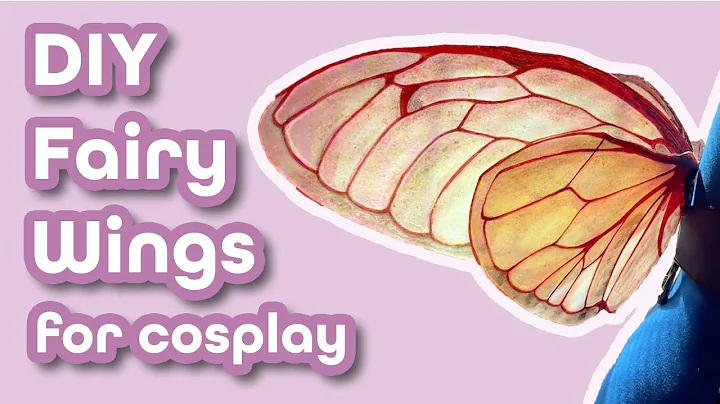Mastering Flying Changes: The Ultimate Guide for Jumpers
Table of Contents
- Introduction: Why Flying Changes are Important
- The Basics of Flying Changes
- Preparing for Flying Changes: The Right Canter
- Setting Up for Success: Half Circles and Teardrop Shape
- Using Outside Leg Aid for a Smooth Change
- Dealing with Dull Horses: Utilizing the Stick
- Understanding the Role of the Shoulders in Flying Changes
- Practicing Flying Changes on Both Reins
- Troubleshooting: What to Do if the Horse Doesn't Change
- Conclusion: Mastering Flying Changes
Introduction: Why Flying Changes are Important
Flying changes are a fundamental skill for jumpers, as they make the rider's rounds much easier and more fluid. There is nothing worse than having a horse disunited during a show jumping round or constantly having to fix leads through trotting and cantering. In this article, we will explore the techniques and exercises to master flying changes, ensuring a smooth and successful ride.
The Basics of Flying Changes
Before diving into the specific exercises, let's understand the basics of flying changes. A flying change refers to the horse changing its lead while in the air during a canter stride. This movement requires coordination, balance, and proper aids from the rider. The horse must shift its weight and adjust its stride seamlessly to maintain a smooth and consistent canter.
Preparing for Flying Changes: The Right Canter
To set the foundation for successful flying changes, it is crucial to establish the right canter. The canter should have sufficient energy and impulsion, allowing the horse to have plenty of jump in its stride. A quiet dressage canter won't provide the necessary lift and momentum for a clean flying change. It's important to encourage the horse to have a more forward canter, ready to jump.
Setting Up for Success: Half Circles and Teardrop Shape
One effective exercise for preparing flying changes is to incorporate half circles or teardrop shapes into the riding pattern. Start by cantering down the track on the right lead and make a half circle or teardrop shape back to the track. As the horse backs off the rail with its shoulder, it encourages the shoulders to turn. This movement sets up the horse for a smoother flying change.
Using Outside Leg Aid for a Smooth Change
As you approach the point where the horse is backing off the rail with its shoulder, utilize your outside leg aid. Applying pressure with your outside leg encourages the horse to change its hindquarters and execute a flying change. It's important to maintain a clear and consistent aid with the outside leg to ensure the horse understands the desired change.
Dealing with Dull Horses: Utilizing the Stick
Some horses may be dull to the leg aid, requiring additional encouragement for flying changes. If your horse lacks responsiveness to the leg aid, using a stick can be helpful. Give a gentle tap with the stick behind your leg to prompt a reaction from the horse. This may result in a slight buck or rush, but it is a common response as the horse tries to shift its weight from one lead to another.
Understanding the Role of the Shoulders in Flying Changes
It's essential to grasp the significance of the horse's shoulders in flying changes. Merely using your shoulders to initiate a change will only affect the front legs. To execute a proper flying change, focus on the feeling of the outside leg aid. This aid engages the horse's hindquarters, allowing for a clean and complete flying change where the horse jumps up and jumps onto its new lead.
Practicing Flying Changes on Both Reins
To attain mastery in flying changes, it's important to practice on both reins. Start on one rein and perform the flying change exercise three times consecutively. Instead of alternating between reins, this approach allows the rider and horse to establish a better understanding of the exercise. Once the horse is comfortable and responsive, switch to the other rein and repeat the exercise.
Troubleshooting: What to Do if the Horse Doesn't Change
Not all horses will easily execute flying changes, and it's important to know how to troubleshoot any issues. If your horse doesn't change leads as desired, you can use a tap with the stick behind your leg. This can result in a slight buck or a rush, but it helps the horse understand the desired change. With repetition and consistency, the horse will become clearer on the aid and execute clean changes without the need for the stick.
Conclusion: Mastering Flying Changes
Mastering flying changes requires practice, patience, and a deep understanding of the proper aids and techniques. By establishing the correct canter, using outside leg aid, and incorporating exercises like half circles, riders can achieve smooth and successful flying changes. Remember, repetition and consistency are key. Keep practicing in the same spot to establish a clear understanding for your horse. With time and dedication, you will master flying changes and elevate your show jumping rounds.
Highlights
- Flying changes are essential for smooth and successful show jumping rounds.
- The canter must have sufficient energy and impulsion for a successful flying change.
- Half circles and teardrop shapes set up the horse for a smoother change.
- Utilize the outside leg aid to prompt the horse to change its hindquarters.
- Dull horses may require the use of a stick to encourage flying changes.
- It's important to focus on the feeling of the outside leg aid for a complete change.
- Practice flying changes on both reins for mastery.
- Troubleshoot non-responsive horses by tapping with the stick behind the leg.
- Consistency and repetition are key to mastering flying changes.
FAQ
Q: How can I establish the correct canter for flying changes?
A: The canter should have plenty of energy and impulsion, ensuring a good jump during the flying change. Avoid a quiet, dressage-like canter and encourage a more forward and energetic canter.
Q: My horse is dull to the leg aid. What can I do to improve flying changes?
A: If your horse lacks responsiveness to the leg aid, you can use a stick. Give a gentle tap behind your leg to prompt a reaction from the horse. With repetition, the horse will become more responsive.
Q: My horse isn't changing leads as desired. What should I do?
A: If your horse isn't changing leads, you can use a tap with the stick behind your leg to reinforce the aid. This may result in a slight buck or a rush, but it helps the horse understand the desired change.
Q: How many times should I practice flying changes on each rein?
A: It's recommended to practice the flying change exercise three times consecutively on one rein before switching to the other rein. This allows the horse to understand and respond better to the exercise.
Q: How long does it take for a horse to learn flying changes?
A: The time it takes for a horse to learn flying changes varies for each individual. Consistency, repetition, and clear aids are essential for the horse to understand and execute flying changes effectively.
Resources







